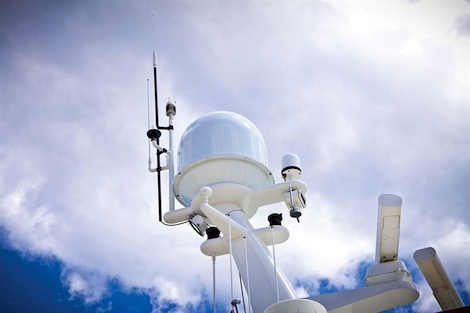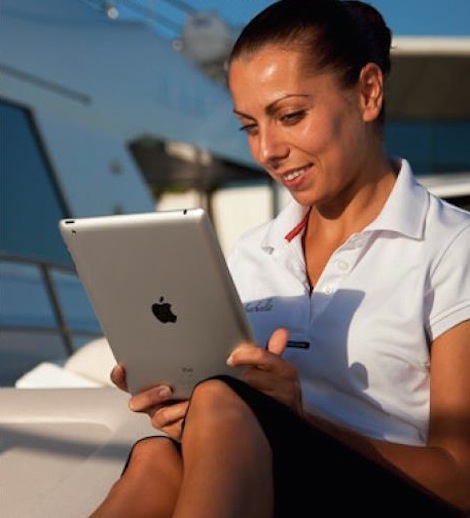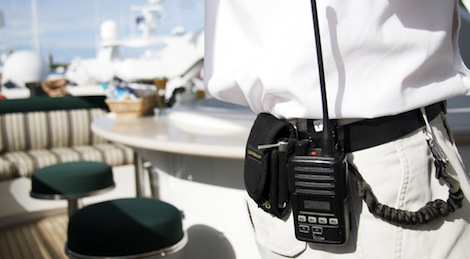The technologies of today
With the operation and maintenance of a superyacht becoming ever more complex, Martyn Cain of i-BOS Limited highlights the technologies that back-end developers are utilising to deliver the new generation of superyacht management solutions.…
One such company is Isle of Man-based yacht management solutions provider i-BOS Limited. Below, web designer Martyn Cain outlines the technological developments that are driving the enhancement of these software solutions and improving the operational efficiency of the fleet...
Cloud servers have spelt an end to sharing files between systems in multiple jurisdictions. Now different departments and offices can log in to the same system, acquiring as much or as little information as required. Security is absolutely paramount in these circumstances and every move within a system can be audited.
But what benefits does a cloud server offer? Having the ability to log on to a shared server to conduct business dramatically cuts down on email correspondence, the hazard of dealing with duplicate or out of date documents now also ceases to exist. Data protection is paramount when dealing with information such as bank account details, owner contact information and other such sensitive material. As such compliance has notoriously been quite a minefield. How and where data is stored has long been a bone of contention for many companies. Cloud storage doesn’t offer all the answers to this but as it isn’t, by its very nature, tied down to a particular jurisdiction, the cloud server within Europe has been favoured to store and transact information.
It would be hard to deny the biggest influence on our work and personal lives is the smartphone. Two years ago the number of mobile users exceeded those using desktops for the first time. The same year, figures from Nielsen indicated that 89 per cent of time spent on a mobile phone was through apps.
This figure is huge and perfectly illustrates how we go about our daily lives. If this is what we consider to be the norm now, why not integrate it into our working life?
Many companies have started to take advantage of this by launching mobile platforms and applications for all areas of a yacht’s life. Planning tools for shipyards allow project management on the move, document management for crew welfare, and regulation can now be shared between captains or managers and authorities. Owners can also monitor and approve invoices and expenses outside of office hours. All of these have dramatically cut down workloads for the various people involved in the running of a superyacht and the processes involved in this operation have become smoother.
As a relatively new application to office tech, digital signatures are becoming an increasingly common tool to use in the superyacht industry. Digital signatures give a highly secure method of document approval without the need to print anything off. Their applications for superyachts can be seen, for example, in the recruitment of new crew.
As has been the normal procedure in the past, a new crewmember is asked to join midway through a charter and their details need to be taken. These details somehow need to get back to the management company (either posted or emailed). The management then needs to have forms and contracts for the new crewmember signed, which would historically involve printing out the documents, posting them to the vessel and physically having them signed and returned. It has been known for this process to take weeks, but with digital signatures it could take minutes.
Using digital signatures and mobile devices together really lets us see how the workplace on board and in the office is going to change in the near future.
Another application to improve compliance, crew recruitment and charter procedures is facial recognition software. I have seen instances where this has been used to authenticate passports of guests. Photos are taken of the passport and of the guest, and the software matches the faces to verify they are the same person, while scanning the passport to determine if the document is valid.
NEW: Sign up for SuperyachtNewsweek!
Get the latest weekly news, in-depth reports, intelligence, and strategic insights, delivered directly from The Superyacht Group's editors and market analysts.
Stay at the forefront of the superyacht industry with SuperyachtNewsweek
Click here to become part of The Superyacht Group community, and join us in our mission to make this industry accessible to all, and prosperous for the long-term. We are offering access to the superyacht industry’s most comprehensive and longstanding archive of business-critical information, as well as a comprehensive, real-time superyacht fleet database, for just £10 per month, because we are One Industry with One Mission. Sign up here.
NEW: Sign up for
SuperyachtNewsweek!
Get the latest weekly news, in-depth reports, intelligence, and strategic insights, delivered directly from The Superyacht Group's editors and market analysts.
Stay at the forefront of the superyacht industry with SuperyachtNewsweek






